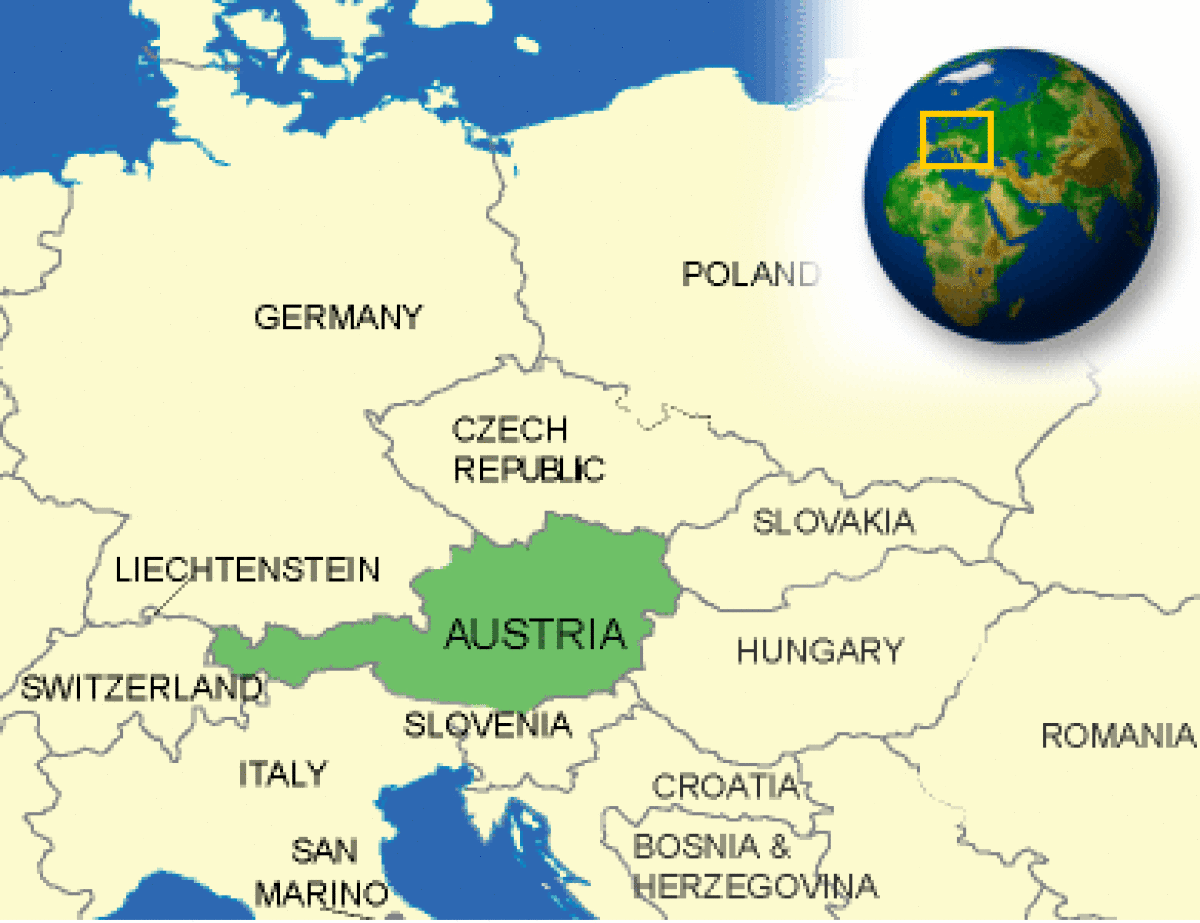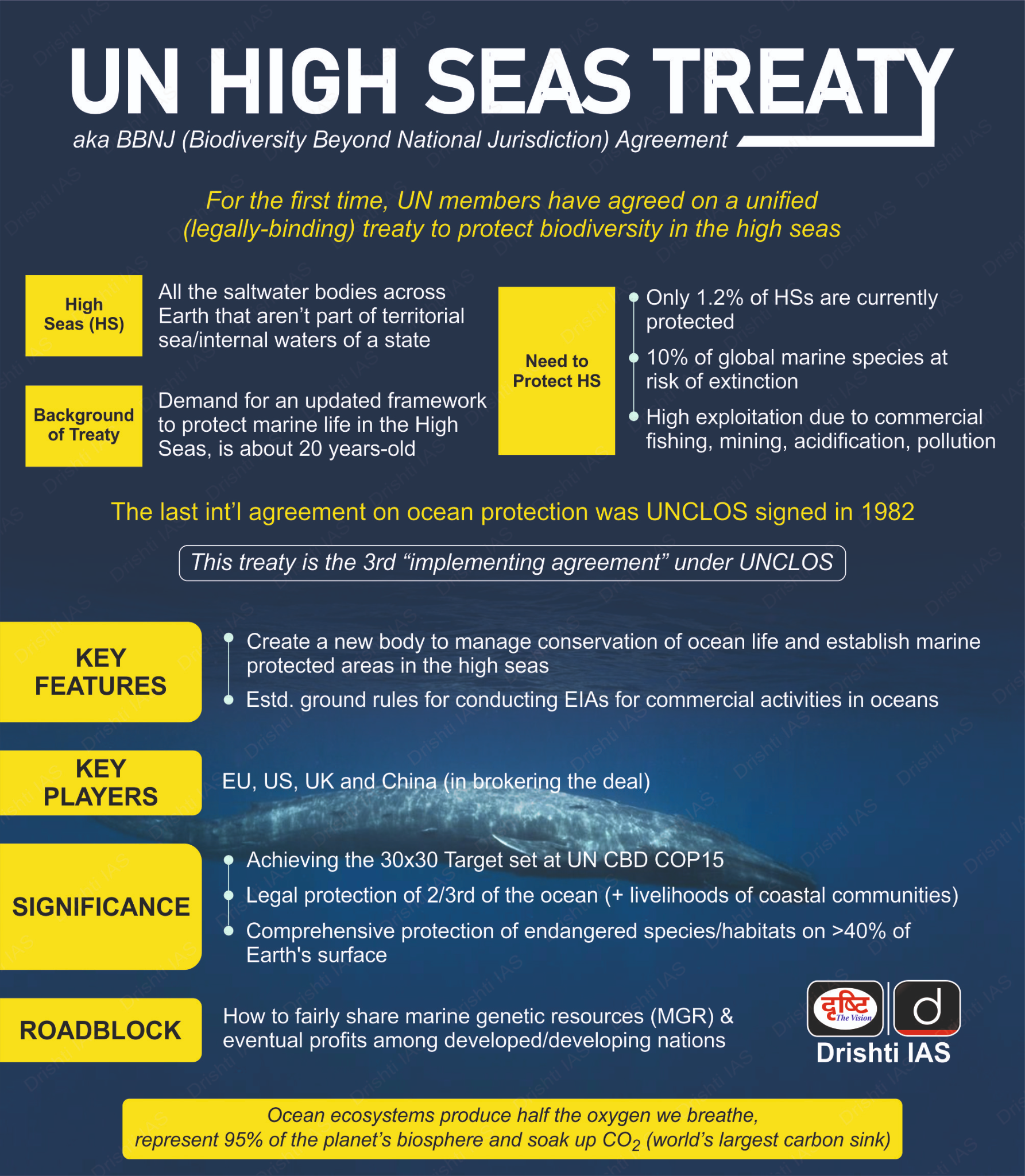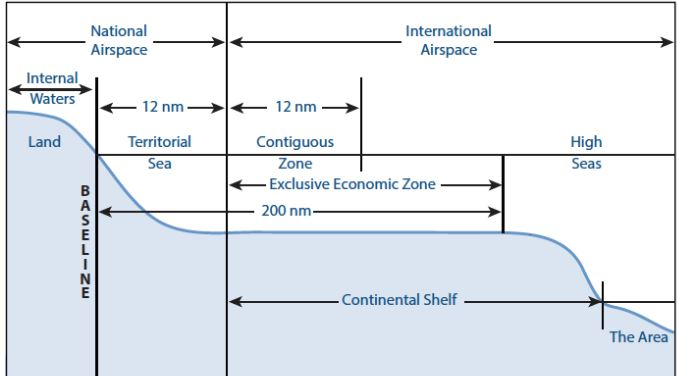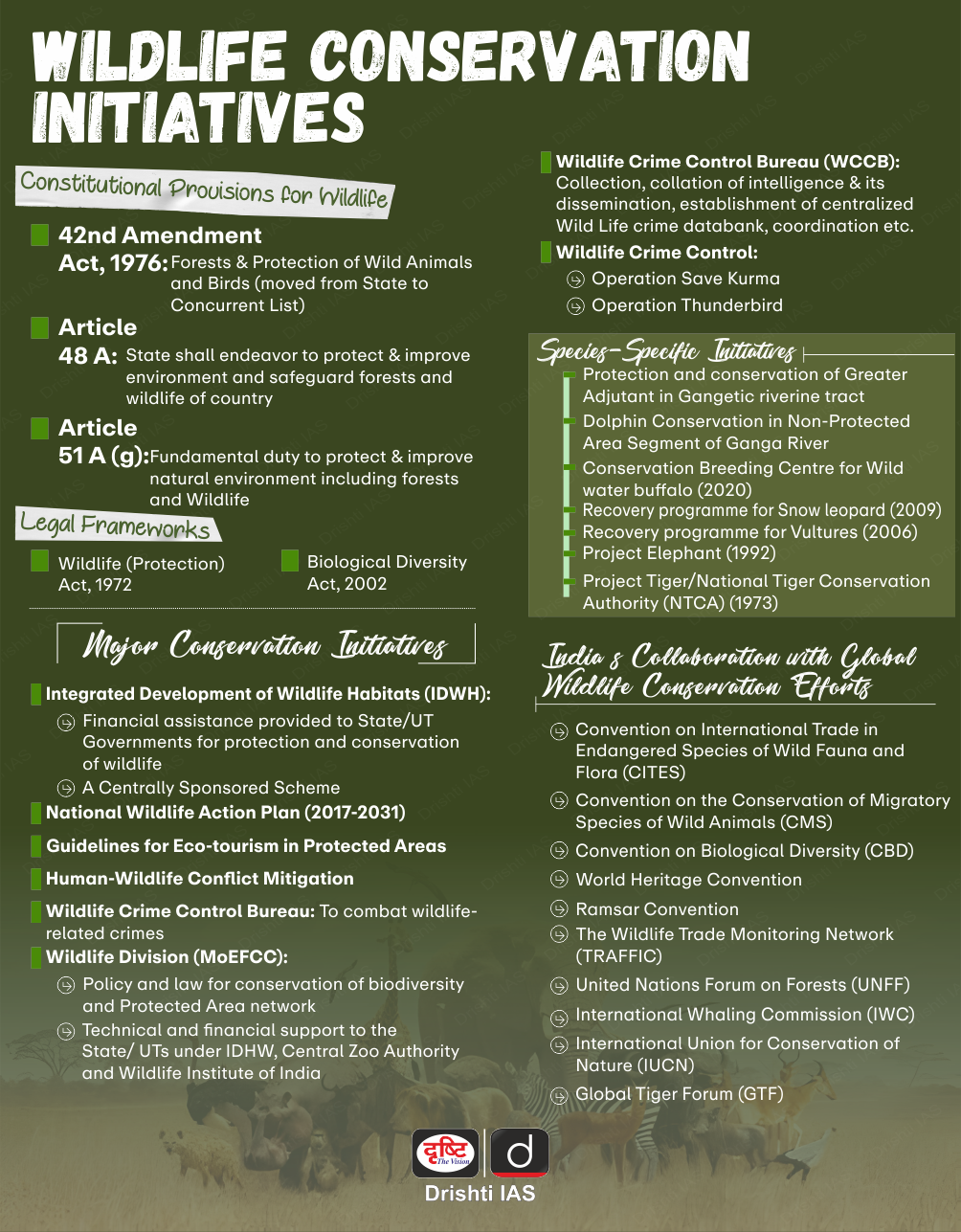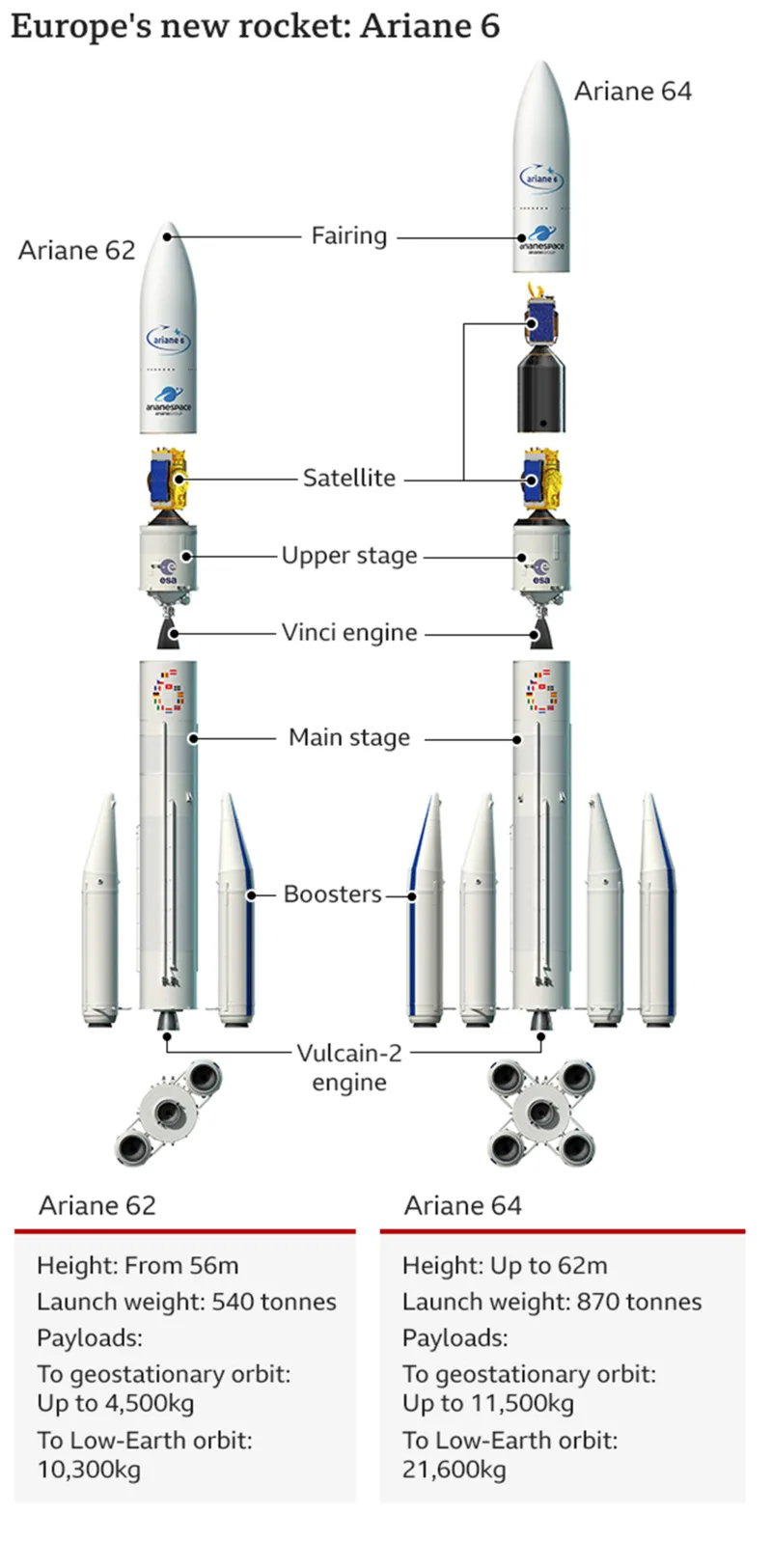International Relations
India-Austria Relations
For Prelims: UNFCCC, UNCLOS, India-Middle East-Europe Corridor, Green Hydrogen Mission, Industry 4.0, European Union, Green Hydrogen Mission
For Mains: India-Austria Relations, Bilateral Relations and Diplomatic Milestones
Why in News?
The Prime Minister of India paid an official visit to Austria, this was the first visit by an Indian Prime Minister to Austria in 41 years, marking the 75th year of diplomatic relations between the two countries.
- The visit aimed to elevate bilateral relations to new heights through enhanced cooperation in various sectors, including technology, economy, and global security.
Note
In June 1955, PM Jawaharlal Nehru paid a State visit to Austria, roughly one month after it had gained full independence through the conclusion of the State Treaty. Nehru's was the first State visit of a foreign leader to newly independent Austria.
What are the Key Highlights of the Prime Minister’s visit to Austria?
- Support for Indo-Pacific Stability: Both nations reaffirmed their commitment to a free and open Indo-Pacific region, ensuring maritime security and adhering to international laws such as United Nations Convention on the Law of the Sea (UNCLOS).
- Political and Security Cooperation: Discussions included assessments of developments in Europe and West Asia, with a shared focus on restoring peace and adherence to international law, notably concerning the Ukraine conflict.
- The leaders welcomed the launch of the India-Middle East-Europe Corridor (IMEC) and Austria's interest to engage with this initiative.
- Economic Collaboration: The leaders agreed on a future-oriented economic partnership focusing on green and digital technologies, infrastructure, renewable energy, and smart cities.
- The first high-level bilateral Business Forum was convened, promoting partnerships across sectors and encouraging CEO-level interactions to explore new opportunities.
- Climate Commitments: Recognizing their commitments under the United Nations Framework Convention on Climate Change (UNFCCC), both countries pledged to collaborate on renewable energy, with a specific focus on Austria's Hydrogen Strategy and India's Green Hydrogen Mission.
- As parties to the UNFCCC and committed to limiting the global temperature increase to below 2°C, leaders acknowledged the importance of reducing climate change risks.
- They noted the EU's target for climate neutrality by 2050, Austria's goal for 2040, and India's aim for net zero emissions by 2070.
- Technology and Innovation: Initiatives such as the Start-Up Bridge and exchanges under Austria's Global Incubator Network and India's Start-Up India were highlighted as crucial for fostering innovation and entrepreneurship.
- They also acknowledged the increasing importance of digital technologies in industrial processes (Industry 4.0), including in the sustainable economy.
- Cultural Exchanges: Acknowledging the role of cultural diplomacy, efforts to promote yoga, Ayurveda, and other cultural exchanges were emphasised.
- Multilateral Cooperation: Both leaders reiterated their commitment to multilateralism and supported comprehensive reforms of the United Nations. India reiterated its support for Austria's UNSC candidature for the term 2027-28, while Austria expressed its support for India's candidature for the period 2028-29.
- India invited Austria to join the International Solar Alliance (ISA), highlighting collaboration in renewable energy and sustainable development.
How have India-Austria Relations been so Far?
- Political Relations: Diplomatic relations established in 1949. 75th year of bilateral relations to be observed from November 2023 - November 2024.
- India played a significant role in Austria's negotiations with the Soviet Union for independence in 1955.
- Economic Cooperation: Austria, one of the richest countries in the European Union, is an important link for India in its relationship with Europe, especially with countries of central and Eastern Europe.
- The Indo-Austrian Joint Economic Commission (JEC) established in 1983 provides a forum for bilateral interaction between the governmental Ministries and Chambers of Commerce and Industry.
- In 2021, Indian exports to Austria totaled USD 1.29 billion, while imports from Austria were USD 1.18 billion, resulting in a balanced bilateral trade valued at USD 2.47 billion.
- By 2022, bilateral trade reached USD 2.84 billion, marking a 14.97% rise from the previous year.
- Key Indian exports: Electronic goods, apparel, textiles, footwear, rubber articles, vehicles & railway parts
- Key Austrian exports to India: Machinery, mechanical appliances, railway parts, iron and steel
- Space: Austria's first two satellites, TUGSAT-1/BRITE and UniBRITE, were launched from India's Satish Dhawan Space Centre, Sriharikota, in 2013.
-
Culture: The Indo-Austrian cultural relationship dates back to the 16th century when Balthasar Springer travelled from Tyrol to India in 1505. The teaching of Sanskrit at Vienna University started in 1845 and a high point was reached in 1880 with the foundation of an independent chair for Indology.
-
Rabindranath Tagore, Nobel Laureate, visited Vienna in 1921 and 1926, fostering significant cultural and intellectual exchanges through his lectures on topics like "The Religion of the Forest," emphasising nature, union, and compassion.
- Ayurveda and Yoga have gained popularity in Austria, with numerous Yoga schools in Vienna.
-
Austria
- Austria is a country located in southern Central Europe. It borders eight countries namely, Germany, the Czech Republic, Slovakia, Hungary, Slovenia, Italy, Switzerland and Lichtenstein.
- Austria is a highly mountainous country due to its position within the Alps mountain range. The Austrian Alps, also known as the Central Alps, form the country's backbone.
- Capital: Vienna
- Membership in International Organizations: Austria has been a member of the European Union (EU) since 1995. In addition Austria is also a member of the following organisations: OECD (Organisation for Economic Co-operation and Development), WTO (World Trade Organization), IMF (International Monetary Funds), and WHO (World Health Organisation).
|
Drishti Mains Question: Q. Discuss the evolution of India-Austria relations, highlighting the key milestones and areas of cooperation. |
UPSC Civil Services Examination, Previous Year Questions (PYQs)
Prelims
Q. Consider the following statements: (2023)
The ‘Stability and Growth Pact’ of the European Union is a treaty that
- limits the levels of the budgetary deficit of the countries of the European Union
- makes the countries of the European Union to share their infrastructure facilitie
- enables the countries of the European Union to share their technologie
How many of the above statements are correct
(a) Only one
(b) Only two
(c) All three
(d) None
Ans: (a)


Biodiversity & Environment
High Seas Treaty
For Prelims: Biodiversity Beyond National Jurisdiction (BBNJ) Agreement, High Seas Treaty, UN Convention on the Law of the Sea (UNCLOS), 1958 Geneva Convention on the High Seas, Exclusive Economic Zone, climate change, El Nino, Ocean Acidification, Environmental Impact Assessments (EIA), Security and Growth for All in the Region (SAGAR), Sustainable Development Goals (SDG).
For Mains: Treaty on the High Seas, Significance for India and the World
Why in News?
Recently, India has decided to endorse and approve the Biodiversity Beyond National Jurisdiction (BBNJ) Agreement also called High Seas Treaty.
- This global agreement is designed to safeguard high seas marine biodiversity through collaboration at international level and it will operate within the framework of the United Nations Convention on the Law of the Sea (UNCLOS).
What are High Seas?
- About:
- According to the 1958 Geneva Convention on the High Seas, parts of the sea that are not included in the territorial waters or the internal waters of a country are known as the high seas.
- It is the area beyond a country’s Exclusive Economic Zone (that extends up to 200 nautical miles from the coastline) and till where a nation has jurisdiction over living and non-living resources.
- No country is responsible for the management and protection of resources on the high seas.
- Significance:
- The high seas cover over 64% of the world's oceans and 50% of the Earth's surface, making them vital for marine life.
- They are home to around 270,000 known species, with many yet to be discovered.
- The high seas regulate climate, absorb carbon, store solar radiation, and distribute heat, crucial for planetary stability and mitigating climate change.
- They are essential for human survival, providing resources like seafood, raw materials, genetic and medicinal resources.
- Threats:
- They absorb heat from the atmosphere and are affected by phenomena like the El Nino, and ocean acidification which is endangering marine flora and fauna.
- Several thousand marine species are at risk of extinction by 2100 if current warming and acidification trends continue.
- Anthropogenic pressures on the high seas include seabed mining, noise pollution, chemical and oil spills and fires, disposal of untreated waste (including antibiotics), overfishing, introduction of invasive species, and coastal pollution.
- Despite these threats, only about 1% of the high seas are currently protected.
- They absorb heat from the atmosphere and are affected by phenomena like the El Nino, and ocean acidification which is endangering marine flora and fauna.
What is the High Seas Treaty?
- About:
- It is formally called the Agreement on Conservation and Sustainable Use of Marine Biological Diversity of Areas Beyond National Jurisdiction. In short, known as BBJN or High Seas Treaty.
- It is a new international legal framework under UNCLOS for maintaining the ecological health of the oceans.
- The treaty was negotiated in 2023 and is meant to reduce pollution, and promote the conservation and sustainable use of biodiversity and other marine resources in ocean waters outside the national jurisdiction of any country.
- Key Objectives:
- Conservation and Protection of Marine Ecology: This includes the establishment of Marine Protected Areas (MPAs) where activities would be regulated to conserve the marine ecosystem.
- Fair and Equitable Sharing of Benefits of Marine Resources: The treaty aims to ensure that the benefits from commercially valuable ocean organisms, either through scientific research or commercial exploitation, are shared equally among all countries.
- Mandatory Environmental Impact Assessments (EIA): The treaty makes it mandatory to conduct prior EIA for any activity that could potentially pollute or damage the marine ecosystem, even if the activity is within a country's national jurisdiction but the impact is expected in the high seas.
- Capacity Building and Transfer of Marine Technologies: This will help developing countries to fully utilise the benefits of the oceans while also contributing to their conservation.
- Signing and Ratification:
- Till June 2024, 91 countries have signed the treaty so far, with 8 of them having ratified it. It will become legally binding 120 days after 60 countries ratify it.
- Ratification is the process by which a country agrees to be legally bound to the provisions of an international law, while signing indicates agreement without legal obligation until ratification occurs. The process for ratification varies by country.
- Till June 2024, 91 countries have signed the treaty so far, with 8 of them having ratified it. It will become legally binding 120 days after 60 countries ratify it.
What is the Significance of the High Seas Treaty?
- Addressing the "Global Commons" Challenge:
- The high seas, covering 64% of the ocean, are a global commons, leading to resource overexploitation, biodiversity loss and environmental challenges.
- The UN estimates that approximately 17 million tonnes of plastics were dumped into the oceans in 2021, with this amount expected to increase in the coming years.
- This treaty has been compared to the 2015 Paris Agreement on climate change. It could lead to the protection of the vast ocean and the sustainable use of marine resources.
- The high seas, covering 64% of the ocean, are a global commons, leading to resource overexploitation, biodiversity loss and environmental challenges.
- Complementing UNCLOS:
- BBJN is in line with the principles of the UNCLOS, which forms the overarching legal framework for the oceans.
- UNCLOS sets general principles for equitable access, resource usage, and biodiversity protection in oceans but lacks specific implementation guidelines.
- The High Seas Treaty will address this gap, serving as an implementing agreement under UNCLOS once it comes into force.
- It will provide a legal mechanism to create and manage marine protected areas in the high seas.
- It will ensure the equitable and sustainable use of marine resources, balancing the interests of developed and developing countries.
- BBJN is in line with the principles of the UNCLOS, which forms the overarching legal framework for the oceans.
- Combating Emerging Threats:
- The treaty addresses emerging challenges such as deep-sea mining, ocean acidification, and plastic pollution, which pose grave threats to the health and resilience of the high seas ecosystems.
- Strengthening International Cooperation:
- By establishing a robust institutional framework and decision-making processes, the High Seas Treaty facilitates greater international cooperation and coordination in ocean governance.
- Contribution to Sustainable Development Goals (SDG):
- The successful implementation of this treaty will significantly contribute to the achievement of SDG 14 (Life Below Water).
- Significance for India:
- Global Leadership: India's commitment to ocean governance and marine resource sustainability such as establishing Marine Protected Areas (MPA) underscores its global leadership and makes it an environmental champion.
- Domestic Policy: The treaty's EIA mandate India to align its maritime policies, promoting responsible international cooperation.
- Economic Benefits: Provisions on benefit-sharing from marine genetic resources align with India's Blue Economy goals, offering potential economic gains.
- Strategic Considerations: Ratifying the treaty strengthens India's Indo-Pacific position, supporting a sustainable maritime environment through the SAGAR initiative.
United Nations Convention on the Law of the Sea (UNCLOS)
- The UNCLOS is an international treaty adopted and signed in 1982, replacing the 4 Geneva Conventions of April 1958 related to territorial sea, contiguous zone, continental shelf, high seas, fishing, and conservation of living resources on the high seas.
- It divides oceans into 5 main zones:
What are the Other Conventions related to Seas?
- Convention on Continental Shelf, 1964: It defines and delimits the rights of States to explore and exploit the natural resources of the continental shelf.
-
Convention on Fishing and Conservation of Living Resources of the High Seas, 1966: It was designed to solve the problems involved in the conservation of living resources of the high seas, considering that because of the development of modern technology some of these resources are in danger of being overexploited.
-
London convention 1972: Its objective is to promote the effective control of all sources of marine pollution and to take all practicable steps to prevent pollution of the sea by dumping of wastes and other matters.
MARPOL Convention (1973): It covers pollution of the marine environment by ships from operational or accidental causes.
- It lists various forms of marine pollution caused by oil, noxious liquid substances, harmful substances in packaged form, sewage and garbage from ships, etc.
Way Forward
- National governments should adopt and ratify the agreement for the High Seas Treaty to take effect. Cooperation across all sectors globally is crucial to ensure the treaty's successful implementation and monitoring for the benefit of ocean life and human well-being.
- By adopting the High Seas Treaty, India and the world can mitigate the impact of shipping and fishing, fostering a sustainable blue economy that benefits both the economy and marine ecosystems.
- The treaty offers India a chance to showcase its commitment to ocean conservation and assume a leadership role in global high seas protection, strengthening its maritime reputation.
Conclusion
The High Seas Treaty represents a landmark agreement in global ocean governance. India's decision to ratify the treaty is a significant step that could have far-reaching implications for the conservation and sustainable use of marine resources worldwide.
|
Drishti Mains Question What is the High Seas Treaty and how this will help in better conservation and governance of the marine ecosystem and economy. |
UPSC Civil Services Examination, Previous Year Questions (PYQs)
Prelims
Q. With reference to the ‘Trans-Pacific Partnership’, consider the following statements: (2016)
- It is an agreement among all the Pacific Rim countries except China and Russia.
- It is a strategic alliance for the purpose of maritime security only.
Which of the statements given above is/are correct?
(a) 1 only
(b) 2 only
(c) Both 1 and 2
(d) Neither 1 nor 2
Ans: (d)
Q. With reference to ‘Indian Ocean Rim Association for Regional Cooperation (IOR-ARC)’, consider the following statements: (2015)
- It was established very recently in response to incidents of piracy and accidents of oil spills.
- It is an alliance meant for maritime security only.
Which of the statements given above is/ are correct?
(a) 1 only
(b) 2 only
(c) Both 1 and 2
(d) Neither 1 nor 2
Ans: (d)
Mains
Q. With respect to the South China sea, maritime territorial disputes and rising tension affirm the need for safeguarding maritime security to ensure freedom of navigation and overflight throughout the region. In this context, discuss the bilateral issues between India and China. (2014)


Biodiversity & Environment
UNESCO Warns of 90% Soil Degradation by 2050
For Prelims: UNESCO, Biosphere Reserves Programme, Desertification, Food and Agriculture Organization, Soil Health Card Scheme, Bonn Challenge
For Mains: Challenges Related to Soil Health in India, Issues Related to Soil Degradation, Conservation
Why in News?
Recently, at an international conference in Agadir, Morocco, United Nations Educational, Scientific and Cultural Organization (UNESCO) Director-General urged its 194 Member States to improve soil protection and rehabilitation as the organisation warns that by 2050, up to 90% of the planet's soil could be degraded.
- This alarming prediction highlights a major threat to global biodiversity and human life.
What are UNESCO's Insights on Global Soil Degradation?
- Current State of Soil Degradation: UNESCO states that according to the World Atlas of Desertification, 75% of soils are already degraded, directly affecting 3.2 billion people. The current trend may increase the impact to 90% by 2050.
- World Soil Health Index: UNESCO will establish a 'world soil health index' with international partners to standardise soil quality measurement and comparison.
- This will help identify trends in degradation or improvement and vulnerable areas, aiming to improve the evaluation of soil management practices.
- Pilot Programme for Sustainable Soil Management: UNESCO will launch a pilot programme for sustainable soil and landscape management in ten natural sites supported by its Biosphere Reserves Programme.
- The program aims to assess and improve management methods, and promote best practices worldwide.
- Training Programs: UNESCO will train member government agencies, indigenous communities, and conservation organisations to access soil-protection tools.
What is Soil Degradation?
- Definition: Soil degradation is defined as a change in soil health status resulting in a diminished capacity of the ecosystem to provide goods and services for its beneficiaries. It involves biological, chemical, and physical decline in soil quality.
- Soil degradation encompasses a broad range of processes that reduce soil health and its ability to function properly within its ecosystem.
- It follows the LADA (Land Degradation Assessment in Drylands) definition of land degradation, highlighting the complexity of degradation processes and their subjective evaluation by different stakeholders.
- This degradation can manifest through loss of organic matter, decline in soil fertility, structural damage, erosion, and adverse changes in salinity, acidity, or alkalinity. It also includes contamination by toxic chemicals, pollutants, or excessive flooding.
- Current State of Soil Degradation: About 33% of the world's soils are moderately to highly degraded. This degradation disproportionately affects regions plagued by poverty and food insecurity, with 40% of degraded soils located in Africa.
- Approximately 12 million hectares of agricultural soils are lost globally each year due to degradation.
- In India, according to the National Bureau of Soil Survey and Land Use Planning, 146.8 million hectares, around 30% of the soil in India is degraded.
- Of this, around 29% is lost to the sea, 61% is transferred from one place to another, and 10% is deposited in reservoirs.
- Causes: Soil degradation can be caused by various factors such as physical factors like rainfall, surface runoff, floods, wind erosion, and tillage.
- Biological factors include human and plant activities that reduce soil quality, while chemical factors involve nutrient reduction due to alkalinity, acidity, or waterlogging.
- The Green Revolution boosted food production but led to significant soil degradation.
- Deforestation exposes soil minerals by removing trees and crop cover, which are vital for soil formation.
- Rapid urbanisation and development projects led to the conversion of land for non-agricultural use, impacting soil quality. Untreated sewage and industrial waste were released into rivers, resulting in toxic water with heavy metals that degraded the soil.
- Mining activities, such as opencast mining, disturbed the water table, contaminated soil and water, and destroyed local flora and fauna. Many states did not enforce pollution laws, allowing industries to dump toxic effluent on agricultural land.
- Biological factors include human and plant activities that reduce soil quality, while chemical factors involve nutrient reduction due to alkalinity, acidity, or waterlogging.
- Impact: Degraded soils lead to reduced food production, heightened food insecurity, and diminished ecosystem services.
- Soil degradation is also a significant environmental issue affecting climate change mitigation and resilience due to its impact on carbon stocks.
Note
- Land degradation has a broader scope than both soil erosion and soil degradation. It includes all negative changes in the capacity of the ecosystem to provide goods and services, encompassing biological, water-related, social, and economic services.
- Desertification refers to land degradation in dryland areas or the irreversible change of land to a state where it can no longer be recovered for its original use.
What are the Initiatives Related to Management of Soil?
- Global:
-
Global Soil Partnership (GSP): The GSP, established in 2012, aims to prioritise soils in the global agenda and promote sustainable soil management.
-
Hosted by the Food and Agriculture Organization(FAO) of the United Nations, the Partnership strives to enhance soil governance for productive soils, ensuring food security, climate change adaptation and mitigation, and sustainable development for all.
-
- World Soil Day: It is celebrated annually on 5th December to raise awareness about the importance of healthy soil and promote sustainable soil management. It was officially adopted by the 68th UN General Assembly 2013, designating 5 December 2014 as the first official World Soil Day.
- Bonn Challenge: It is a global goal to bring 150 million hectares of degraded and deforested landscapes into restoration by 2020 and 350 million hectares by 2030.
- It was launched by the Government of Germany and International Union for Conservation of Nature (IUCN) in 2011, the Challenge surpassed the 150-million-hectare milestone for pledges in 2017.
- Land Degradation Neutrality (LDN): It is a goal of the UNCCD (United Nations Convention to Combat Desertification) to stop and reverse land degradation by 2030.
-
LDN is defined as a state where the amount and quality of land resources are stable or increasing, within specific time and space, and support ecosystems, food security, and human well-being:
-
-
Sustainable Development Goal 15 : Goal 15 of the 2030 Agenda aims to protect, restore, and promote sustainable use of terrestrial ecosystems, sustainably manage forests, combat desertification, halt and reverse land degradation, and halt biodiversity loss.
- Recarbonization of Agricultural Soils (RECSOIL): It was led by the FAO, and aims to decarbonise global agricultural soils by increasing soil organic carbon (SOC) through sustainable soil management (SSM) practices.
-
- India:
Way Forward
- Regenerative Agriculture: It focuses on restoring soil health through practices like crop rotation, cover cropping, and reduced tillage. These methods enhance soil organic matter, improve water retention, and increase biodiversity.
- Develop and use biochar, compost, and other organic amendments to improve soil structure and fertility.
- Promote Agroforestry: Integrate trees and shrubs into agricultural landscapes. Agroforestry not only prevents soil erosion but also enhances soil fertility.
- Assessment and Mapping: Create a global database on standardising soil health monitoring this allows for better tracking of progress and facilitates targeted interventions.
- Green Infrastructure: Integrate green roofs, bioswales, and urban parks into city planning. This allows rainwater infiltration, reduces runoff, and creates pockets of healthy soil.
- Reclaim and remediate abandoned industrial sites for urban agriculture or green spaces, promoting soil regeneration.
- Bioremediation: Utilise microbes and plants to break down or neutralise contaminants in polluted soils, promoting natural soil healing.
- Phytomining: Explore the use of specific plants that can absorb and accumulate metals from contaminated soils, offering a natural remediation approach.
UPSC Civil Services Examination Previous Year Question (PYQ)
Prelims:
Q. Consider the following statements: (2017)
The nation-wide ‘Soil Health Card Scheme’ aims at
- expanding the cultivable area under irrigation.
- enabling the banks to assess the quantum of loans to be granted to farmers on the basis of soil quality.
- checking the overuse of fertilisers in farmlands.
Which of the above statements is/are correct?
(a) 1 and 2 only
(b) 3 only
(c) 2 and 3 only
(d) 1, 2 and 3
Ans: (b)
Mains:
Q. How far is the Integrated Farming System (IFS) helpful in sustaining agricultural production? (2019)a


Governance
Global Reports on Trans Fats and Insufficient Physical Activity
For Prelims: World Health Organization (WHO), Trans fats, Bad Cholesterol (LDL), Eat Right Movement, Heart Attack, Diabetes, Food Safety and Standards Authority of India (FSSAI), REPLACE
For Mains: Impacts of Trans Fat, Challenges in Eliminating Trans Fat, Initiatives to Eliminate Trans Fat.
Why in News?
Recently, the World Health Organization (WHO) has published the fifth milestone report on progress towards global trans fat elimination, covering the period from 2018–2023.
- In another development, a study was published in the Lancet Global Health journal that indicates almost 50% of adults in India engaged in insufficient levels of physical activity in 2022.
What are the Key Highlights of the WHO Report on Trans Fat?
- Industrially produced TFA is identified as a major contributor to heart disease. TFA offers no nutritional benefits and is detrimental to public health.
- In 2018, WHO set a target to eliminate TFA from the global food supply by the end of 2023. Even though the target has not been fully met, there has been remarkable progress made and sustained elimination would be achieved by 2025.
- By 2023, WHO's REPLACE action framework facilitated widespread adoption of best-practice policies in 53 countries, impacting 3.7 billion people, a substantial increase from 6% coverage five years earlier.
- WHO initiated a Validation Programme to recognise countries achieving TFA elimination goals. Denmark, Lithuania, Poland, Saudi Arabia, and Thailand were the first to receive the TFA Validation Certificate.
- WHO recommends all countries enact and enforce best-practice policies, engage in the Validation Programme, and encourage companies to reformulate products to eliminate TFA globally.
- Implementing best practice policies in just eight additional countries, (including Azerbaijan and China) would eliminate 90% of the global TFA burden.
What are the Highlights of the Lancet Paper on Insufficient Physical Activity?
- The definition of insufficient physical activity is not performing at least 150 minutes of moderate-intensity or 75 minutes of vigorous-intensity physical activity per week.
- Globally, about a third (31.3%) of adults were insufficiently physically active in 2022, up from 26.4% in 2010.
- South Asia ranks second highest globally in terms of insufficient physical activity among adults, following the high-income Asia Pacific region.in India, 57% of women were found to be insufficiently physically active, compared to 42% of men.
- Projections indicate that by 2030, 60% of Indian adults could be insufficiently active if current trends persist.
- Physical inactivity increases the risk of non-communicable diseases such as diabetes and heart disease. Rising physical inactivity, along with sedentary lifestyles, contributes to the increasing prevalence of these diseases and burdens healthcare systems.
Note
- A 2023 study by the Indian Council of Medical Research-India Diabetes (ICMR-INDIAB) estimated that in 2021, India had:
- 101 million people with diabetes.
- 315 million people with hypertension.
- 254 million people with obesity.
- 185 million people with high levels of LDL or 'bad' cholesterol.
Trans Fats
- Trans fats, or trans-fatty acids, are unsaturated fatty acids that come from either natural or industrial sources.
- Naturally occurring trans-fat comes from ruminants (cows and sheep).
- Industrially-produced trans-fat is formed in an industrial process that adds hydrogen to vegetable oil converting the liquid into a solid, resulting in “partially hydrogenated” oil .
India's Initiatives to Promote Healthy Lifestyle
What can be done to Ensure a Healthier Lifestyle among the Population?
- Check food labels for "partially hydrogenated oils" which indicate trans fats and choose healthy fats like olive oil, avocado, nuts, and fatty fish.
- Aim for at least 150 minutes of moderate-intensity exercise or 75 minutes of vigorous-intensity exercise per week as recommended by WHO. Break up sedentary time with short walks or stretches throughout the day.
- Encourage opportunities for women to participate in physical activity, like safe walking paths and women-only fitness classes. Promote the health benefits of exercise specifically for women.
- Raise awareness about the dangers of trans fats and the importance of physical activity through educational campaigns. Partner with schools, workplaces, and community centres to spread the message.
- Advocate for stronger government regulations to limit trans fats in processed foods. Support policies that promote physical activity like walkable neighbourhoods and public recreation facilities.
UPSC Civil Services Examination, Previous Year Question(PYQ)
Prelims:
Q. A company marketing food products advertises that its items do not contain trans-fats. What does this campaign signify to the customers? (2011)
- The food products are not made out of hydrogenated oils.
- The food products are not made out of animal fats/ oils.
- The oils used are not likely to damage the cardiovascular health of the consumers.
Which of the statements given above is/are correct?
(a) 1 only
(b) 2 and 3 only
(c) 1 and 3 only
(d) 1, 2 and 3
Ans: (c)


Important Facts For Prelims
NTCA’s Plan on Relocation of Villages
Why in News?
Recently, the National Tiger Conservation Authority (NTCA) has urged state wildlife departments to develop a comprehensive timeline and action plan for the relocation of villages situated within the core tiger habitats.
What is NTCA's Villages Relocation Plan?
- About Core Areas:
- Wildlife Protection (Amendment) Act, 2006 emphasises the need for undisturbed areas to support viable tiger breeding populations.
- Core or critical tiger habitats refer to areas within tiger reserves that are kept untouched to ensure the survival of breeding tiger populations.
- The NTCA's focus is on the 55 notified tiger reserves in India, where approximately 600 villages (64,801 families) currently reside within core tiger habitats.
- Wildlife Protection (Amendment) Act, 2006 emphasises the need for undisturbed areas to support viable tiger breeding populations.
- Voluntary Village Relocation Program (VVRP):
- Voluntary Village Relocation Program (VVRP) has twin objectives of empowering the local communities by giving access to development opportunities and creating inviolate space for tigers so that both can co-occur in harmony.
- Relocations must be voluntary and based on the informed consent of gram sabhas and families involved and Forest rights of Scheduled Tribes and other forest dwellers must be recognised and settled.
- Compensation: Families can choose between financial compensation (Rs 15 lakh per family) or a resettlement package (including land, housing, and basic amenities).
- Issues With Relocation Plan: The NTCA's relocation package falls short of the legal standards set by the Land Acquisition Act, 2013.
- NTCA does not comply with the legal requirement of the Land Acquisition Act, 2013, which has special provisions to provide resettlement and rehabilitation to ST communities and forest dwellers.
- Voluntary Village Relocation Program (VVRP) has twin objectives of empowering the local communities by giving access to development opportunities and creating inviolate space for tigers so that both can co-occur in harmony.
Project Tiger
- Project Tiger is a wildlife conservation initiative in India that was launched in 1973.
- The primary objective of Project Tiger is to ensure the survival and maintenance of the tiger population in their natural habitats by creating dedicated Tiger Reserves.
- Starting with only nine reserves, the project marked a paradigm shift in wildlife conservation efforts. By 2024, it had grown to 55 reserves in different states, totalling 2.38% of India's land area.
- The unreliable pug-mark method of the first tiger census in 1972 gave way to more accurate techniques like the camera-trap method.
Read more: Wildlife Protection Act, 1972, Forest Rights Act, National Tiger Conservation Authority
UPSC Civil Services Examination, Previous Year Question (PYQ)
Prelims
Q1. At the national level, which ministry is the nodal agency to ensure effective implementation of the Scheduled Tribes and Other Traditional Forest Dwellers (Recognition of Forest Rights) Act, 2006? (2021)
(a) Ministry of Environment, Forest and Climate Change
(b) Ministry of Panchayati Raj
(c) Ministry of Rural Development
(d) Ministry of Tribal Affairs
Ans: (d)
Q2. Consider the following statements: (2018)
- The definition of “Critical Wildlife Habitat” is incorporated in the Forest Rights Act, 2006.
- For the first time in India, Baigas have been given Habitat Rights.
- Union Ministry of Environment, Forest and Climate Change officially decides and declares Habitat Rights for Primitive and Vulnerable Tribal Groups in any part of India.
Which of the statements given above is/are correct?
(a) 1 and 2 only
(b) 2 and 3 only
(c) 3 only
(d) 1, 2 and 3
Ans: (a)


Facts for UPSC Mains
Employment Rate Rises Significantly in FY24
Why in News?
Recently, the Reserve Bank of India (RBI) data revealed a significant rise in India's employment rate, growing by 6% in FY24 from 3.2% in FY23, reflecting positive trends in the labour market.
Note
- The latest quarterly bulletin of Periodic Labour Force Survey (PLFS) released by the Ministry of Statistics and Programme Implementation (MoSPI) in May 2024 shows that the unemployment rate (UR) in urban areas decreased.
What does the RBI Data Reveal About Job Growth in India?
- Overall Employment Rate: The RBI's India KLEMS [Capital (K), Labour (L), Energy (E), Material (M) and Services (S)] database showed that in the year 2022-23, employment in the country was 57.75 crore, compared to 56.56 crore in 2021-22.
- The database covers 27 industries and provides estimates at the broad sectoral levels and all-India levels. It includes measures of Gross Value Added, Labour Employment, Capital Stock, and inputs such as Energy, Material, and Services.
- Female Unemployment: The female unemployment rate showed a notable decline, dropping from 9.2% in January–March 2023 to 8.5% in January–March 2024.
- The female worker population ratio (WPR) in urban areas increased from 20.6% in January – March 2023 to 23.4% in January – March 2024, indicating a general upward trend in WPR.
Periodic Labour Force Survey Quarterly Bulletin (January-March 2024)
- The PLFS gives estimates of Key employment and unemployment Indicators like, the Labour Force Participation Rates (LFPR), Worker Population Ratio (WPR), Unemployment Rate (UR), etc and the Activity Status- ‘Usual Status’ and ‘Current Weekly Status’.
- Unemployment Rate (UR) in urban areas decreased from 6.8% to 6.7% during January–March 2023 to January–March 2024 for persons of age 15 years and above.
- Female UR decreased from 9.2% in January–March 2023 to 8.5% in January–March 2024.
- Labour Force Participation Rate (LFPR) in urban areas has shown an increasing trend from 48.5% to 50.2% during January – March 2023 to January – March 2024 respectively for persons of age 15 years and above.
- Female Labour Force Participation Rate in urban areas rises from 22.7% to 25.6% during January – March 2023 to January – March 2024, reflecting overall increasing trend in LFPR.
- Increasing trend in Worker Population Ratio (WPR) for persons of age 15 years and above from 45.2% in January – March 2023 to 46.9% in January – March 2024.
- Female Worker Population Ratio in urban areas rose from 20.6% to 23.4% during January – March 2023 to January – March 2024, reflecting overall increasing trend in WPR.
Note
- The National Sample Survey Office (NSSO) launched PLFS in April 2017 to estimate employment and unemployment indicators in urban areas within a short time interval. It also aims to estimate these indicators in both rural and urban areas annually.
|
Drishti Mains Question: Q. Discuss the trends in employment and unemployment in India, as revealed by the RBI data. Analyse the challenges in creating quality jobs. |
UPSC Civil Services Examination, Previous Year Questions (PYQs)
Mains
Q. Most of the unemployment in India is structural in nature. Examine the methodology adopted to compute unemployment in the country and suggest improvements. (2023)


Rapid Fire
World Population Day 2024
World Population Day is observed on 11th July every year to raise awareness about global population issues and the importance of reproductive health and rights. It was established by the United Nations in 1989.
- History:
- In 1989, the United Nations Development Programme (UNDP) proposed that July 11th be designated as World Population Day to draw global attention to the urgency and significance of population-related issues.
- UNDP was inspired by the public interest and awareness that was created by "Five Billion Day" on 11th July 1987 when the world's population reached 5 billion.
- Theme:
- The theme of this 2024 WPD is “Leave no one behind, count everyone”.
- In 2011, the global population reached the 7 billion mark, it stands at almost 7.9 billion in 2021, and it's expected to grow to around 8.5 billion in 2030, 9.7 billion in 2050, and 10.9 billion in 2100.
- According to the UN's World Population dashboard, India's population 2024 stands at slightly over 1.428 billion.
Read more: World Population Day


Rapid Fire
Successful Launch of Ariane 6 Rocket
Recently, the European Space Agency (ESA) successfully launched the Ariane 6 rocket, for the first time, from French Guiana, marking Europe’s return to independent space access after delays and setbacks.
- It is the latest rocket in Europe's Ariane rocket series (taking over from Ariane 5) that can launch missions from low-Earth orbit and farther out into deep space.
- Ariane-5 Rocket has been used to launch ISRO’s communication satellites like GSAT-11, GSAT-30, GSAT-31, ESA’s Juice mission and NASA’s James Webb Space Telescope (JWST).
- This debut flight carried nine cubesats into orbit, including NASA's CubeSat Radio Interferometry Experiment (CURIE) and other satellites studying Earth's climate and weather.
- The Vinci engine used in the upper stage is designed to restart repeatedly, allowing the operating agency to place payloads into several different orbits.
- 29 missions will be launched by Ariane 6 over the next several years and aims for up to 12 flights a year.
Read more: European Space Agency's Juice Mission


Rapid Fire
Jagannath Rath Yatra and Ashadhi Bij
Recently, the PM greeted the people on the auspicious occasion of Jagannath Rath Yatra and Ashadhi Bij, the Kutchi New Year. The CM of Gujarat performed the 'Pahind Vidhi,' the symbolic cleaning of the path for Jagannath's chariot for the Rath Yatra.
- Jagannath Rath Yatra: It is an annual Hindu festival that celebrates the journey of Lord Jagannath, his elder brother Lord Balabhadra, and his younger sister Goddess Subhadra from their home temple in Puri, Odisha to their aunt’s temple in Gundicha, about three kilometres away.
- The festival dates back to at least the 12th century CE, when the Jagannath temple was built by King Anantavarman Chodaganga Deva.
- The festival is also known as Festival of Chariots, as the deities are carried on three massive wooden chariots that are pulled by devotees with ropes.
- It begins on the second day of the bright fortnight of the month of Ashadha (June-July) and lasts for nine days.
- Ashadhi Bij:
- It falls on the second day of Shukla paksha of Ashada month of Hindu calendar.
- The festival is associated with the beginning of rains in the Kutch region of Gujarat.
- During Ashadhi Bij, the moisture in the atmosphere is checked to predict which crop would do best in the coming moa
| Traditional New Year Festivals in India | |
| Name | Features |
| Chaitra Shukla Pratipada | Marks the beginning of the new year of the Vikram Samvat also known as the Vedic (Hindu) calendar. |
| Gudi Padwa and Ugadi | Celebrated in the Deccan region including Karnataka, Andhra Pradesh and Maharashtra. |
| Navreh | Lunar New Year celebrated in Kashmir. Falls on the first day of the Chaitra Navratras. |
| Sajibu Cheiraoba | Celebrated by Meiteis in Manipur. Observed on the first day of Manipur lunar month Shajibu. |
| Cheti Chand | Celebrated by Sindhi community. Birth anniversary of Ishta Deva Uderolal/Jhulelal, the patron saint of Sindhis. |
| Bihu | Celebrated thrice a year - Rongali or Bohag Bihu in April, Kongali or Kati Bihu in October and Bhogali or Magh Bihu in January. |
| Baisakhi | Celebrated as the Indian thanksgiving day by farmers. Foundation of the Khalsa Panth was laid on this day by Guru Gobind Singh. |
| Losoong | Also known as Namsoong, is the Sikkimese New Year. |
Read More: Jagannath Rath Yatra, Ashadhi Bij


Rapid Fire
Gold Smuggling at China Border
Recently, the Indo-Tibetan Border Police (ITBP) under the operation Jazba arrested two men near the China border in Eastern Ladakh for allegedly smuggling 108 kg of gold biscuits from China.
- While smuggling of smaller items was common, it was the first time that an alleged gold smuggling racket was exposed in the area which was the largest haul of gold ever by ITBP.
- ITBP is authorised to carry out search and seizures by the Union Ministry of Home Affairs (MHA) and also incorporated in the ITBP Act to exercise the powers of Customs on the border to keep a check on smuggling activities.
Read more: Countering the Menace of Smuggling



